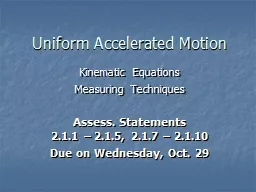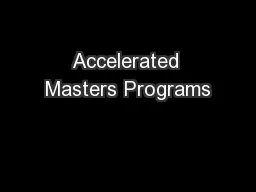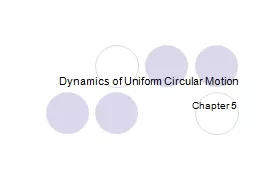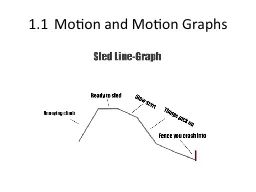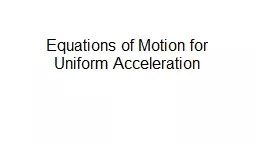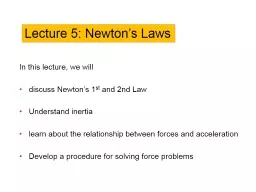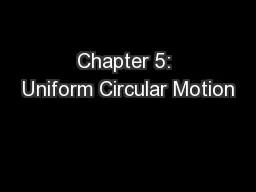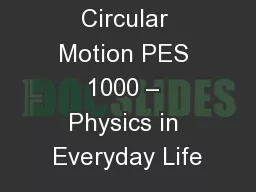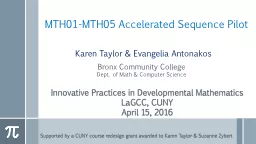PPT-Uniform Accelerated Motion
Author : lindy-dunigan | Published Date : 2016-12-07
Kinematic Equations Measuring Techniques Assess Statements 211 215 217 2110 Due on Wednesday Oct 29 Uniform Accelerated Motion Acceleration The rate at
Presentation Embed Code
Download Presentation
Download Presentation The PPT/PDF document "Uniform Accelerated Motion" is the property of its rightful owner. Permission is granted to download and print the materials on this website for personal, non-commercial use only, and to display it on your personal computer provided you do not modify the materials and that you retain all copyright notices contained in the materials. By downloading content from our website, you accept the terms of this agreement.
Uniform Accelerated Motion: Transcript
Download Rules Of Document
"Uniform Accelerated Motion"The content belongs to its owner. You may download and print it for personal use, without modification, and keep all copyright notices. By downloading, you agree to these terms.
Related Documents

